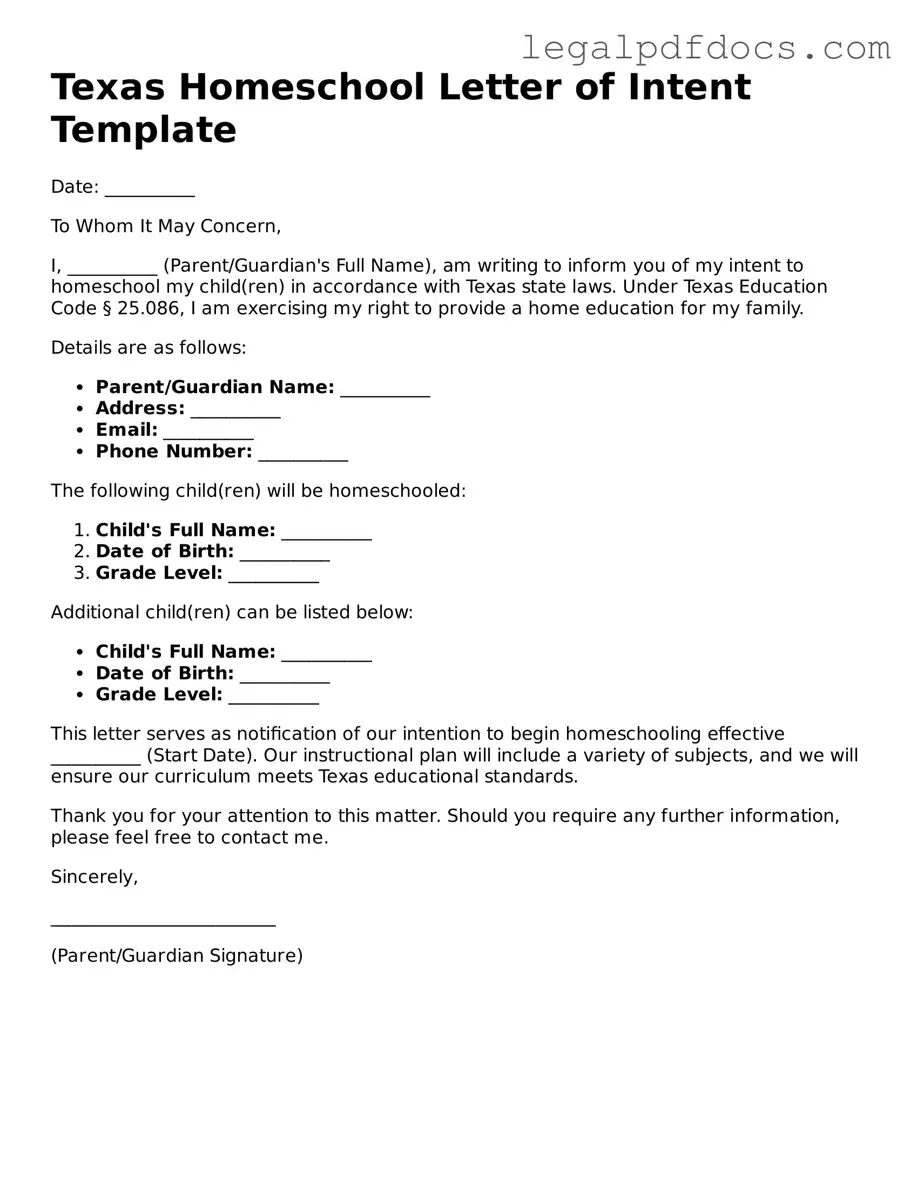In Texas, families who choose to educate their children at home must submit a Homeschool Letter of Intent to officially notify the local school district of their decision. This form is a crucial first step in the homeschooling process, as it establishes the family's commitment to providing a structured educational environment. The letter typically includes essential information such as the names and ages of the children being homeschooled, the address of the residence, and the intended curriculum or educational approach. While there are no strict guidelines on how to format the letter, it should be clear and concise, demonstrating the family's intent to provide a quality education. Importantly, the submission of this letter does not require approval from the school district, but it serves as a formal declaration of the family's educational choice. Understanding the requirements and implications of the Homeschool Letter of Intent is vital for parents embarking on this educational journey, as it helps ensure compliance with Texas state laws while allowing for the flexibility and creativity that homeschooling offers.
